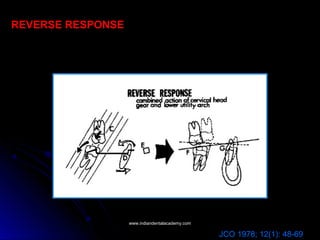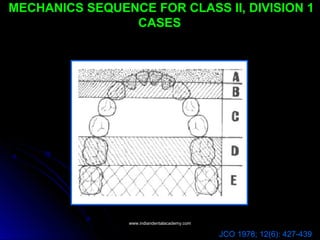Bioprogressive therapy, developed by Drs. Ricketts and Bench, focuses on comprehensive facial treatment rather than just correcting teeth or occlusion, utilizing a systems approach and principles such as torque control, muscular and cortical bone anchorage, and orthopedic alterations. The methodology includes a visual treatment objective to forecast growth and guide treatment, with an emphasis on progressive treatment sequences to unlock malocclusions and optimize function. Prefabricated appliances are employed to streamline procedures while maintaining treatment efficiency and quality results.















































































































































